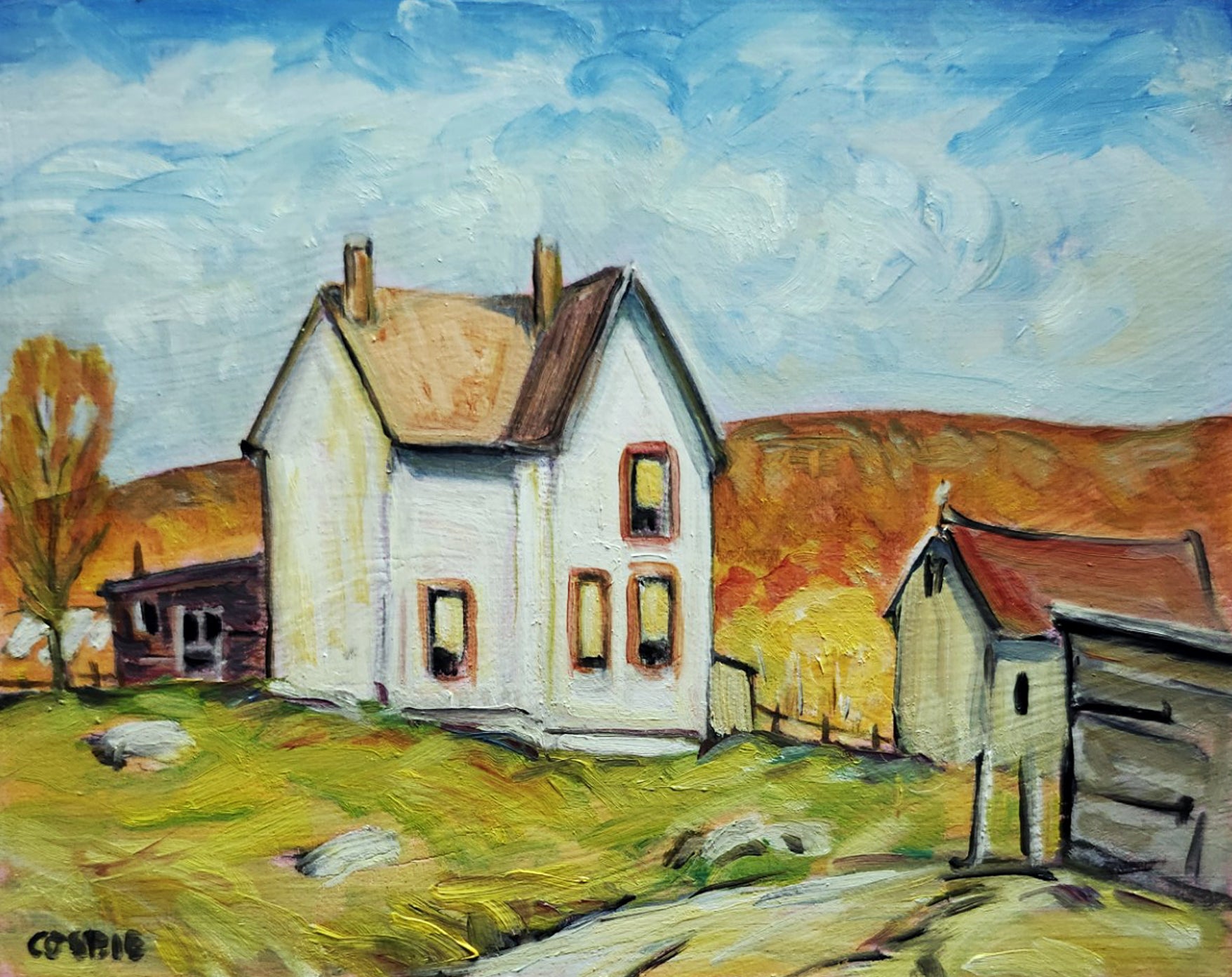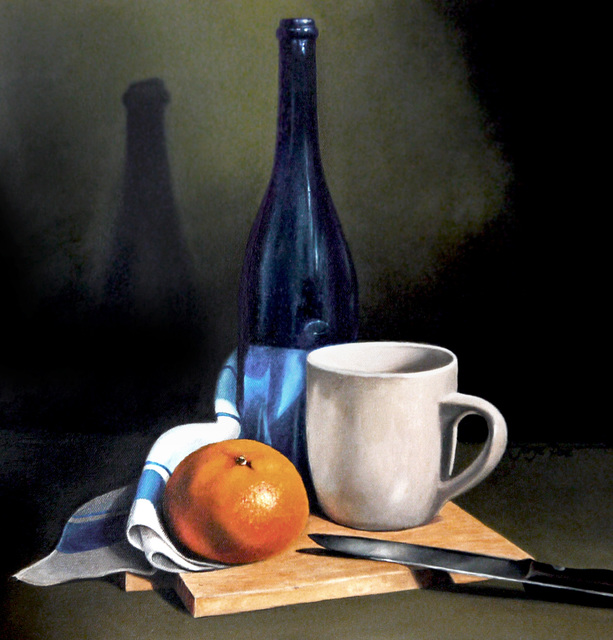What to Take into consideration in Selecting the Perfect Oil Paintings for Your Home Style

Recognizing Your Individual Design
When picking oil paintings for home design, understanding one's personal style is essential. Individuals must first review their choices, considering components such as shade, theme, and psychological vibration. Some might move in the direction of lively abstract pieces that stimulate energy, while others may prefer calm landscapes that promote peace. Acknowledging whether one leans towards modern minimalism or traditional realism can direct the selection procedure. Furthermore, individual style often shows social impacts, experiences, and imaginative tastes, making it critical to select pieces that reverberate deeply. By aligning their choices with their special aesthetic, people create a natural atmosphere that improves their space, eventually causing a home that personifies their individuality and values via art.
Thinking about the Size and Scale
Dimension and scale play a critical function in the efficient assimilation of oil paintings into home style. Selecting the appropriate measurements warranties that artworks complement the area as opposed to bewilder or underwhelm it (oil paintings for sale). For bigger rooms, substantial paints can work as focal points, including deepness and interest. On the other hand, smaller art work can improve cozy areas without triggering mess. When determining on dimensions; a well-placed painting can create consistency and balance in a room, it is essential to take into account wall area and furniture arrangement. Additionally, grouping smaller sized items can produce a natural gallery result, while a solitary large canvas might stand alone as a declaration piece. Ultimately, the chosen dimension and range should show the total design intent of the home
Choosing the Right Shade Scheme
Picking the ideal shade combination for oil paintings is important to enhance a home's decor. It not just matches existing furnishings but also sets the wanted state of mind for every space. In addition, the impacts of lights can significantly influence just how shades are perceived, making careful factor to consider secret.
Enhance Existing Decor
A harmonious shade combination can transform a room, making oil paintings a perfect selection for improving home design. When picking art work, it is necessary to contemplate the existing shades in the space. A painting that enhances or contrasts the dominant tones can produce visual interest. If an area features soft blues and whites, an oil paint with similar tones can unify the design, while a vibrant, different item can serve as a focal point. Furthermore, recognizing the undertones in the space's color plan-- whether great or cozy-- can direct the option of art work. Ultimately, the right oil painting need to enhance the total aesthetic, creating a cohesive and welcoming atmosphere that shows the property owner's individual style.
Establish the Mood
Choosing the best shade palette for oil paintings can substantially affect the mood of an area. Cozy tones, such as oranges and reds, often tend to develop an inviting and energetic environment, making them ideal for social spaces like living spaces. In comparison, cool tones, such as environment-friendlies and blues, promote serenity and leisure, best for bed rooms or checking out nooks. Neutral colors, including grays and browns, can supply an innovative backdrop, allowing other components to beam. Furthermore, thinking about the psychological influence of details shades is important; for example, yellow can evoke happiness, while darker shades can instill a sense of drama. Ultimately, selecting a color palette that straightens with the preferred ambiance will certainly improve the overall style and individual expression within the home.
Take Into Consideration Lights Consequences
When curating a home design system, the influence of lights on the perception of oil paintings can not be neglected. Natural light, for instance, can considerably change the shades and textures of an art work, improving its vibrancy or muting its tones. On the other hand, man-made lighting can develop darkness or highlights that may either take away or enhance from the painting's total effect. As a result, homeowners need to consider the strength and kind of light in an area when selecting oil paints. Warm lights can enrich natural shade palettes, while cooler lights may match extra dynamic, modern art. Ultimately, recognizing exactly how different lights affects color assumption is vital in choosing the appropriate oil paints that balance with a space's setting and visual objectives.
Choosing a Theme or Subject Issue
When selecting a style or topic for oil paintings, individual style preferences play a vital function in guaranteeing that the art work resonates with the home owner. Additionally, taking into consideration the functionality of each space can lead options that boost the general setting. Ultimately, keeping consistency with the existing shade scheme is necessary for producing a cohesive and inviting area.
Individual Style Preference
Personal design choice plays a crucial role in selecting oil paintings that improve home decoration. People commonly incline specific themes or subject matters that resonate with their tastes and personalities. A person with a penchant for nature might like landscapes, while somebody attracted to metropolitan life may pick cityscapes. Abstract art can interest those that value modern-day visual appeals, while classic still lifes may draw in traditionalists. The selected artwork ought to show the homeowner's identity, creating a natural ambience. Furthermore, color pattern and emotional tones of the paintings can greatly impact the space, adding to a desired setting. Eventually, aligning the art work with individual design preferences assures that the chosen oil paints function as purposeful centerpieces in the home.
Area Performance Factor To Consider
Exactly how can area functionality affect the selection of oil paints? The objective of a space plays a vital role in identifying the appropriate motif or subject for oil paints. In a peaceful bed room, calming landscapes or abstract items can evoke peace and leisure. On the other hand, in a lively living room, lively and dynamic artworks might boost the energetic atmosphere. Dining locations can take advantage of still-life or food-related paints, which can stimulate conversation and cravings. Additionally, the selection of artwork ought to align with the activities occurring in the space; as an example, inspirational items in an office can inspire productivity. Eventually, choosing paints that reverberate with the space's feature ensures a harmonious and inviting environment.
Shade Scheme Consistency
A cohesive shade palette is vital for choosing oil paints that enhance the overall design of a home. When picking artwork, people ought to think about the existing shades within the room, consisting of wall surface tones, furniture, and accessories. Paints that enhance or contrast sympathetically with these components can boost the aesthetic appeal of a space. In addition, choosing a motif or subject that reverberates with the home owner's personal style creates a more inviting environment. For instance, serene landscapes might match a soothing hideaway, while lively abstracts could invigorate a vibrant event room. Eventually, the appropriate combination of shade and theme assurances that the art work not just fits within the decoration but likewise contributes to an unified and expressive home setting.
Examining the Psychological Effect
What sensations do particular oil paintings evoke in a viewer's room? The psychological impact of an artwork can considerably affect the setting of a space. Dynamic colors and dynamic brush strokes might motivate power and creative thinking, while softer tones and serene landscapes can evoke serenity and peace. Abstract items often trigger introspection, inviting viewers to interpret the oil paintings for sale emotions shared. In addition, the subject issue plays an essential role; pictures can instill link, while nature scenes might promote a sense of tranquility. Audiences might also find fond memories in art work that reflects personal experiences or memories. Ultimately, choosing oil paints that reverberate emotionally can change a living setting, developing a space that feels genuine and inviting to its residents.
Locating the Perfect Placement
Where in a home can oil paints best boost the overall aesthetic? Positioning is substantial for taking full advantage of the impact of oil paintings. In living areas, large pieces can function as focal factors above sofas or fire places, attracting focus and sparking conversation. Corridors and entranceways benefit from smaller, grouped jobs, developing a welcoming atmosphere. In bed rooms, softer, calm landscapes or abstracts can advertise relaxation when hung above the bed. Dining areas can include vivid items that promote hunger and discussion. It's crucial to take right into account lights; natural light can alter the paint's appearance, so position artworks where they receive suitable illumination. Inevitably, thoughtful placement can boost the state of mind and cohesiveness of an area, making the artwork an essential part of the home's decoration.
Budgeting for Your Artwork
Establishing a budget for artwork is necessary for any person aiming to boost their home style. It aids to specify economic limits, making certain that the option procedure stays satisfying and sensible. Prospective purchasers ought to consider their total investing capability, including prices for framing, installation, and upkeep. Looking into different price arrays for oil paints can also offer important insights right into what to expect. In addition, people may intend to prioritize their preferences, whether they are attracted to emerging artists or developed names, as this will considerably influence rates. By setting a clear budget, art fanatics can concentrate on finding items that not only resonate with their aesthetic but additionally straighten with their economic goals, causing a satisfying purchase experience.
Often Asked Questions
Just how Do I Maintain and Take Care Of Oil Paintings?
Keeping and caring for oil paints includes maintaining them in a stable atmosphere, preventing direct sunshine, dusting carefully with a soft towel, and sometimes speaking with a specialist conservator for cleaning or remediation demands.
Can Oil Paintings Be Hung in Humid Areas?
Oil paints can be hung in humid areas, but caution is suggested. Excess humidity may create paint to weaken or canvas to warp. Correct air flow and environment control can help alleviate possible damage in time.
What Is the Distinction In Between Initial Art and Prints?

Exactly how Do I Select a Framework for My Oil Paint?
Choosing a framework for an oil paint involves taking into consideration the artwork's design, shade scheme, and size. A well-selected framework boosts the item, enhancing its aesthetic while shielding it from damages and including in its presentation.
Are There Certain Musicians Known for Home Decoration Oil Paintings?
Several artists focus on oil paints suitable for home decoration, consisting of Claude Monet for impressionistic landscapes, Gustav Klimt for decorative motifs, and Georgia O'Keeffe for lively flower make-ups, each offering one-of-a-kind styles to enhance indoor spaces. Comprehending one's individual design is essential when selecting oil paintings for home design. Choosing the right shade scheme for oil paints is vital to enhance a home's decor. A harmonious color palette can transform an area, making oil paints a perfect choice for enhancing home design. Individual design preference plays a necessary duty in picking oil paints that boost home style. A natural shade combination is vital for choosing oil paintings that improve the general decor of a home.